Take a step back in time and relax – you may see locals travelling by mule and cart or one of the many old fashioned windmills dotted around the countryside (a few are transformed into quirky homes by people searching for a place abroad).
The region is bustling with fairs and markets which are a good place to ource the local produce – sausages of many kinds, honey, 'presunto' ham, fresh fruit and vegetables, sourdough bread, olive oil, dried figs and a myriad of cheeses. If you are feeling hungry there is usually a restaurant under canvas serving mouthwatering barbecued chicken and pork to be washed down with jugs of local red wine.
If you are touring the Alentejo you may hear the music of the 'campanistas' playing their unusual shaped guitars. Here you can listen to the song of the Viola Campaniça singing 'The Daughters of Rosa'. Fado the blues of Portugal can also be heard in this the haunting melody of 'The Faraway Sea' sung by Teresa Salgueiro.

Life in the 'campo' (countryside)
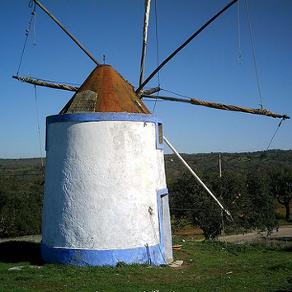
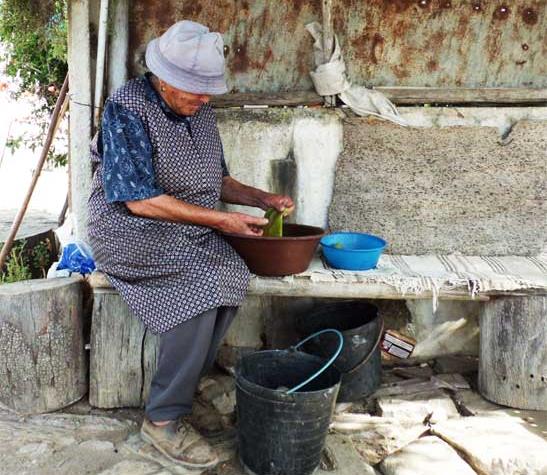
In the campo you can find old farmhouses (quintas), where families live the same kind of life their parents and grandparents lived. Many have no electricity or running water but these people have a deep connection with their land. They keep a couple of pigs to slaughter in the wintertime, have chickens in the backyard and grow vegetables on every square metre of garden – in other words they are almost entirely self sufficient. Pork is the most popular meat and a slaughtered pig can last a whole year for one family. Chouriço sausages, highly spiced and made with pork and wine, are hung from the fireplace and smoked, almost every last morsel of the animal is made use of.
The farmhouses still echo the building style of the Moors who invaded and settled here in Medieval times. Walls are made of mud dug out of the surrounding earth (taipa) and the ceilings are constructed from bamboo which grows wild near streams. Outside the surrounds of windows and doors are painted – traditionally blue for health, yellow for wealth or green for good spirits. Bread ovens are built outside along with the piggeries and, very often, an outside kitchen – the weather being so mild that outdoor meals can be consumed all year round.
The farmers here follow lunar gardening, planting and harvesting by the phases of the moon. Cork is a main crop along with olives, fruit trees, vegetables, wine, medronho (a kind of fruit schnappes) and honey. Loquats grow virtually wild here along with the quince. Marmalada, a sweet paste, is made from the quince and can be eaten with cheese similar to the Manteiga cheese of Spain.
Matança do porco (traditional pig slaughter)
Many rural Portuguese families raise a pig or two for meat to last them throughout the year. Being self-sufficient they also grow their own fruit and vegetables. Because pig slaughter has been practiced for many centuries the pig and its meat now belong to the national identity. But the slaughtering of a pig is more than providing food, it is also a social happening, where families, neighbours and friends get together in a spirit of mutual help and celebration. This spirit of helping is very strong, and a family that receives help from the neighbour, friend or family, later will return the favour.
Raising a pig is not an expensive activity, because this animal eats all kinds of food scraps. In the old days, breeding a pig for household consumption was the only chance to eat meat during the winter. The economic value of this animal in the Portuguese culture is very important with almost all the parts of the animal being made use of.
The slaughtering is early in the morning. An experienced matador kills the pig by a deep cut in the neck. After the blood has been collected, the hair is burned off and the intestines are taken out. The men cut up the meat and after that the women prepare sausages like Morcela (blood sausage), Linguiça (cured sausage with paprika and garlic) and Chouriço (similar to Linguiça, but spicier) by mixing meat, fat, herbs and spices and sometimes red wine.
Dry cured-ham, presunto is made from the joints of meat and is similar to the prosciutto of Italy and Serrano ham of Spain.
Today, European law forbids animal killing at home, for hygienic reasons, while animals rights activists condemn this practice, because they consider it barbaric. However, here in Portugal a family is still allowed to keep and kill a pig for consumption and this tradition will be alive until the rural communities disappear. The quality of the meat is much higher than supermarket pork and is also free of antibiotics and hormones. The pig does not travel to an unknown abbatoir and the slaughter is over within minutes.
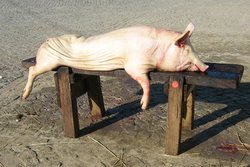
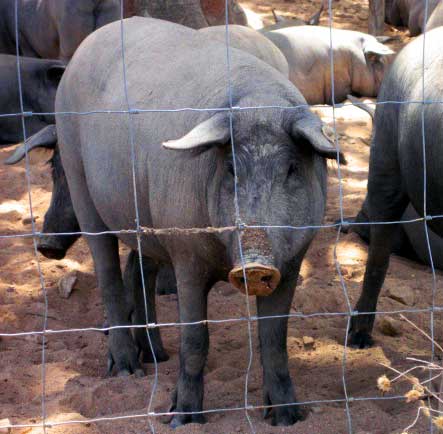
Photo: a black pig (porco preto) © Xyzt1234
The black pig has the most flavoursome meat and is served in the local restaurants as 'porco preto'.
Aguardente de Medronho
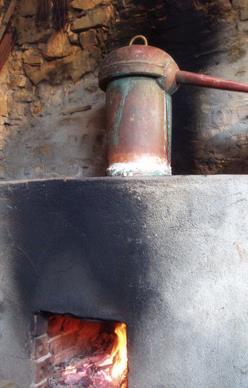
A copper Medronho still (above) and Medronho berries (below).
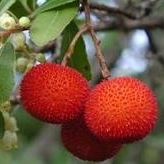
During the months of October to December it is time to pick the ripe berries of the Medronheiro (Strawberry/Arbutus tree). Only the yellow and red ones are perfect for making the local spirit, Aguardente de Medronho which resembles a good quality schnapps. In the old days whole families walked through the serra to pick the berries from the wild trees but now farmers grow their own plantations as well.
It takes between seven and 10 kilograms of fruit (depending on the quality) to make one litre of Medronho. The picked fruit is stored in barrels, sealed with a watertight lock and is left to ferment for approximately 2-3 months. Then the distillation takes place in a straight pipe alembic made from copper, heated by a slow fire. This method of distilling was passed from generation to generation for hundreds of years. When European law wanted to stop this old tradition many farmers went 'underground' and the good stuff is now unfortunately only available 'under the table'. Legally they are allowed to make only 30 litres of Medronho a year for personal consumption.
Listen to this hilarious tribute to Medronho by the 'Tasmaniac' called Medronho Moonshine.
Rub a little Medronho between your hands and, if you can smell the fruit after the alcohol evaporates, you can be sure it is good quality.
Hunting and shooting
Many dog owners in the Algarve give their dog the name of Diana, the patron of the hunters. Hunting is an ancient tradition in Portugal and is popular with country and city dwellers alike. The shooting of birds and game was always a welcome opportunity to feed the family with something else other than pork or chicken.
Nowadays rules are more strict and nature preservation is high on the agenda. The organisation of a hunt is taken very seriously. But hunting also means enjoying nature and a fine lunch in a local restaurant, where the caçadores (hunters) eat, drink and talk about their hunting experiences.
The hunting season runs from 15 August till 28 February. The caçadores (hunters) are usually active on Thursdays and Sundays.
Exceptions:
- Falconry (Caça de Cetraria), hunting with archery (Arco), hunting with crossbows (Besta) and fox hunting with dogs (Cação á Raposa e Corricão):
- Wednesdays and Saturdays
- Shooting parties with beaters for mongoose and fox (Batidas á Raposa e Saca Rabos):
- Fridays, Saturdays, Sundays, public holidays
- Organised hunts for wild boar, deer or wild mountain goats (Batidas e Montarias á Javali):
- Fridays, Saturdays, Sundays, public holidays
Note: Hunting is not allowed on an election day or day of referendum.
To hunt in Portugal you need to pass a theory exam and acquire an arms license from the PSP police. For the Algarve the authority is the Federação de Caçadores do Algarve (www.fcalgarve.pt).
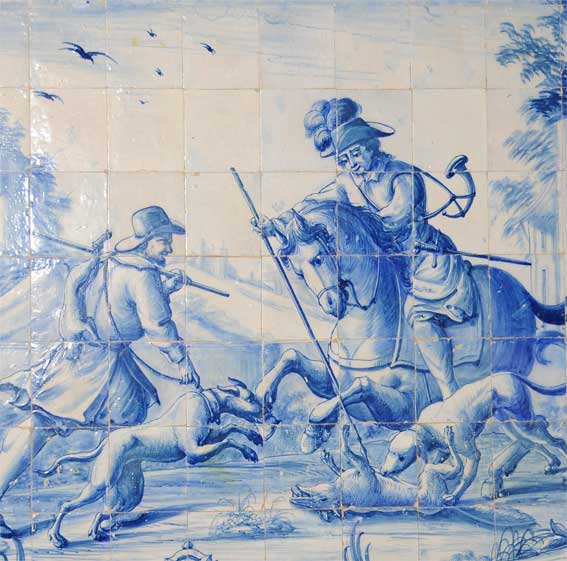
Photo: Hunting scene depicted on antique Portuguese tiles © JoseOlgon
The hunting season runs from 15 August to 28 February and the hunters are active on Thursdays and Sundays.
Taipa buildings (rammed earth)
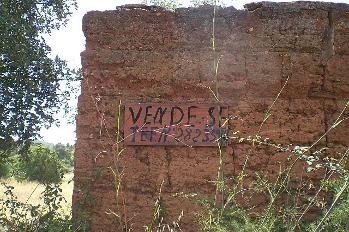
Taipa walls are of a similar construction to a Devon cob cottage.
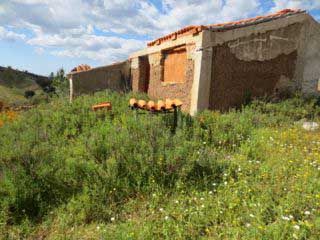
Rammed earth is a method of wall building that has been around for 10,000 years. During that time frame every imaginable type of building from single and multi-family homes to monasteries, palaces and fortresses have been constructed. Rammed earth is the strongest, safest, and most earthquake resistant type of earth building. In addition, it is more durable than other types of earth walls for building due to the raw materials used and the methods employed. Rammed earth is used throughout the world thanks to the virtually unlimited supply of raw materials; stone, sand and clay.
Taipa walls are constructed by putting moistened earth into shuttering (taipal) and compacting it manually with a pile driver or by mechanical means. Rammed earth was the most widely used construction technique in southern Portugal until the 1950s, and a large heritage of earth constructions still remains. In terms of the sustainability, comfort and energy efficiency of buildings, rammed earth has many advantages over present day construction (concrete and brick). Earth is readily available and is a cheap building material.
Rammed earth constructions offer a very good level of comfort due to their high inertia, a result of the thickness of the walls and the characteristics of the earth. Earth can regulate the indoor climate, maintaining temperature and relative humidity within a comfortable range.
Rammed earth walls do not allow heat to enter in the summer: the heat that strikes the wall each day only reaches the inside when the outside temperature is lower. In winter, rammed earth walls make it harder for the heat to escape because of the earth’s high thermal inertia. This technique of building is gaining ground again with the increased interest in greener building techniques.
Cork – a sustainable local industry

The versatility of cork – cork platform shoe (above) and cork armchair (below).

No tree is cut down for cork which makes it a very sustainable material.
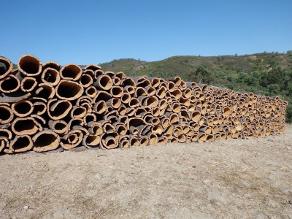
Harvested cork bark
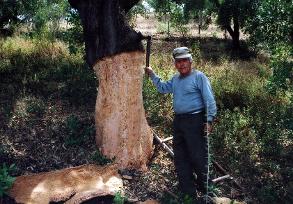
Cork is natural, renewable and recyclable.
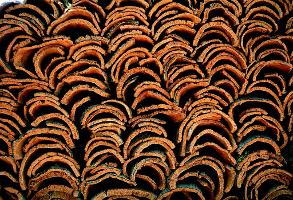
The landscape is under threat due to the increased use of the metal screw top and plastic in wine bottles.
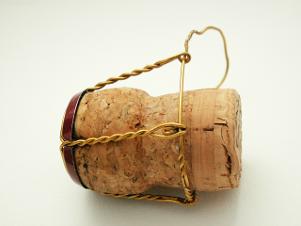
Cork is the outer bark of the cork oak tree and as harvesting is confined to the bark this makes the cork industry extremely sustainable. The cells in cork are sound and heat insulators and can absorb pressure and shocks. No other material can match it's properties to date.
The bark of the cork oak is stripped away every nine to ten years and it takes at least 25 years for a new tree to become profitable. Although the ancient Greeks and Romans knew about the properties of cork, it only started to be harvested commercially in Portugal about three hundred years ago. As in previous centuries the cork is cut using hand axes as no mechanical method has yet been invented to do the job as well. Cork cutting skills are handed down from generation to generation.
- A tree known as the 'Whistler Tree' because of the many song birds attracted to it, is said to be 212 years old. It is estimated that this tree has already produced more than 1,000,000 natural cork stoppers.
- A natural cork has full sealing capacity for more than 100 years owing to its elasticity, waxes and fatty acids.
- More than 50% of all the cork in the world is produced in Portugal.
- When you see number on a cork out trunk it refers to the year it was last harvested.
- The Algarve and south Alentejo produce the best quality cork.
- Cork oak trees also help with global warming as they store carbon to help regrow their bark. Surprisingly a harvested cork oak tree absorbs up to five times more carbon than an unharvested tree.
- The first new moon of the month of May is the traditional start of the cork harvesting season.
Cork strippers at work
